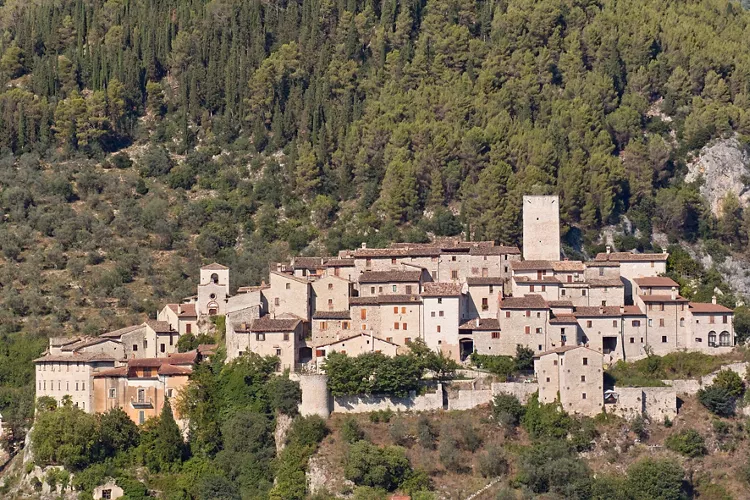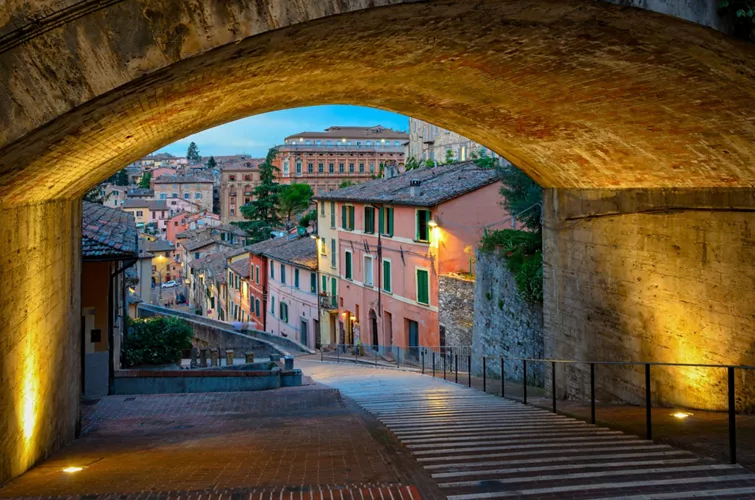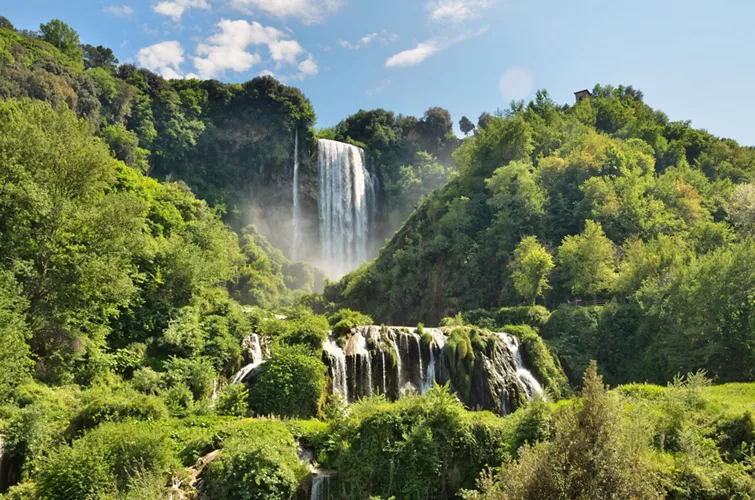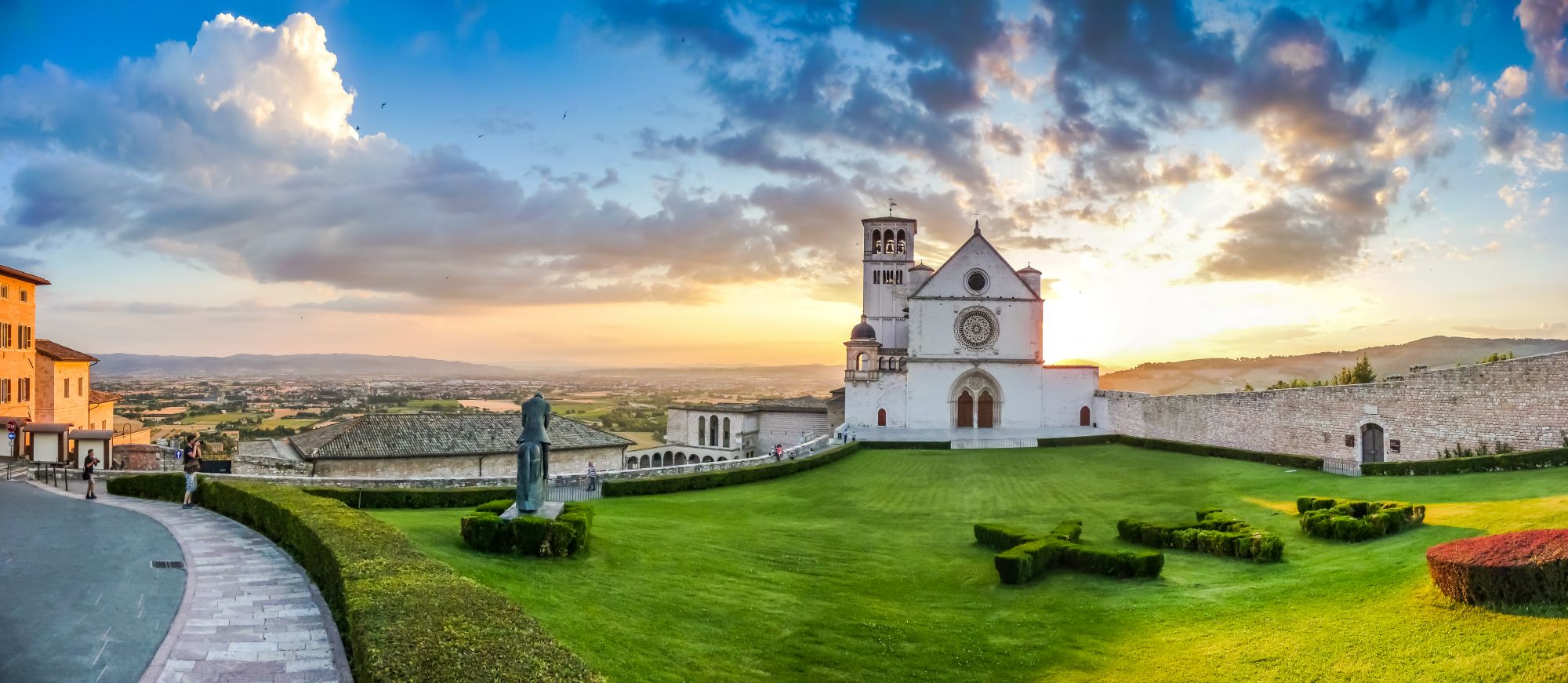From Assisi to Perugia, via Gubbio, Lake Trasimeno and Marmore Falls: Umbria is a truly enchanting tourist destination
Peaks covered in lush forests and vast valleys outlined by rivers, lakes, and waterfalls; hills often crowned by villages and castles, crossed by paths steeped in history, art and culture, in a natural environment that helps to restore the body and soul: Umbria, the Green Heart of Italy, is all this and much more.
The fantastically varied scenery of Umbria offers plenty of opportunities to enjoy an unforgettable holiday, be in contact with nature, be in search of your inner spirit, or have thrilling adventures. Anyone who loves Italian cuisine will be spoiled for choice, between family-run trattorias and the restaurants of Michelin-star chefs.
1. Origins and history of Umbria

Inhabited since the Stone Age, Umbria was the scene of the Battle of Sentino in 295 BC between the Roman army and an alliance of the Etruscans, Samnites, Senones, and Umbrians.
Part of the Duchy of Spoleto established by the Lombards, for centuries the territory was linked to the Papacy after Charlemagne’s conquest.
Saint Francis of Assisi was born here, giving rise to the Italian literary tradition and a new type of spirituality linked to fraternity, humility, and poverty.
Umbria enchants around every corner, boating the greatest number of medieval villages in Italy, with centuries-old fortresses, including the imposing Rocca Paolina, commissioned by Pope Paul III as a symbol of papal power over the ancient city of Perugia.
2. Main cities in Umbria

Time stands still in Perugia, with Etruscan walls, a medieval historic center, and the imposing Palazzo dei Priori (“Palace of the Priors”).
A fantastic cultural hub, the city is home to the highly prestigious University of Perugia, founded in 1308, and the largest university in Italy for foreign students.
Gubbio, the city of stone, has always fascinated illustrious travelers and writers with its beauty, history, and traditions.
Orvieto is a jewel perched on a tuff cliff, with an imposing Duomo and the impressive Well of St Patrick.
Foligno, at the heart of the Umbrian Valley, displays hints of its ancient origins in its elegant architecture and precious paintings preserved in the city’s museums.
Then there is Assisi, a unique example of a sanctuary city recognized as a UNESCO World Heritage Site because of the Basilica of San Francesco d’Assisi and other sites linked to the saint, including the Basilica of Santa Chiara and the Cathedral of San Rufino.
3. What to see in Umbria

Umbria is the only region in peninsular Italy not washed by the sea, though it still has bountiful water.
The Marmore Falls is a magical place where the Velino river meets the Nera river.
Nearby, you can admire Lake Piediluco and spend hours relaxing or enjoying sports on its shores.
The largest lake in the region is Lake Trasimeno, surrounded by delightful villages like Castiglione del Lago and Passignano sul Trasimeno.
The quiet, traditional medieval town of Città della Pieve is home to the narrowest alleyway in Italy and some of the most renowned works by painter Pietro Vannucci, known as Perugino, between the Cathedral of the Saints Gervasio and Protasio and the Palazzo della Corgna.
If you are looking for truly unique places, don’t miss Spoleto, with its majestic late-14th-century Rocca Albornoziana, a medieval fortress on the top of the Hill of Saint Elia, and Castelluccio di Norcia, one of the highest settlements in the Apennines.
In early summer, visitors flock here to enjoy the unique spectacle of the tree blossoming.
4. Unusual places in Umbria

Visitors seeking unique experiences off the beaten track can find countless unusual places in Umbria. La Scarzuola is a surreal architectural complex designed by creative genius Tomaso Buzzi, who decided to build his own ideal city by mixing elements of the past with those of the present and future.
A few kilometers from Terni, you can explore the Narni Underground, a complex of hypogea that extends beneath the city. Along the route, you will find a convent complex rich in frescoes, Roman aqueduct tunnels, and a large room where interrogations by the Inquisition Tribunal were once held.
The Cave of Monte Cucco will take you deep into the mountain, on a fantastic underground journey among stalactites and stalagmites, galleries, labyrinths, and tunnels.
In the comune of Campello sul Clitunno, you can immerse yourself in the poetic nature park of the Fonti del Clitunno, fed by underground springs that flow naturally from cracks in the rock.
5. Typical Umbria products

Anyone who loves Italian cuisine will find a myriad of flavors in Umbria, starting with black truffle, the protagonist of many traditional dishes.
Norcia ham will win you over with its unique, strong flavor, while for something more delicate, you should try lentils of Castelluccio, grown on the Karst plains in the Monti Sibillini National Park.
If you enjoy pulses, you definitely have to try Trasimeno beans, boiled and dressed with a drizzle of oil, or cooked in a pan with tomato and garlic.
Umbria is also home to the world-famous Perugina chocolate and Montefalco Sagrantino DOCG, a wine with an intense ruby red color and a dry, harmonious flavor.
Visitors with a sweet tooth should not miss out on trying Torcolo di San Costanzo, a typical Perugia doughnut prepared since 1500 with bread dough, enriched with candied lemon peel, sultanas, and pine nuts, and the delicious mostaccioli Umbri, kneaded using must from freshly pressed grapes.
6. Umbrian events

Umbria’s rich history takes the stage in many events held throughout the year.
On 15 May, Gubbio hosts the Race of the Ceri, an ancient ceremony in which locals carry on their shoulders three tall, heavy wooden artifacts surmounted by statues of Saint Ubaldo (patron saint of bricklayers), Saint George (patron saint of merchants) and Saint Anthony Abbot (patron saint of donkeys and farmers) and parade them through the city streets.
The Joust of the Quintana in Foligno is a charming medieval historical re-enactment of jousting that attracts thousands of spectators every year in mid-June.
Meanwhile, in August, Città della Pieve hosts a re-enactment of the ancient tradition of bull hunting: the Palio of the Terzieri, an archery competition in which participants have to hit moving bull-shaped silhouettes mounted on a carousel that gets faster turn after turn.
July is the month of music, with Umbria Jazz, the most renowned Italian jazz music festival has been held in Perugia every year since 1973. Last but not least, in October, Perugia hosts Eurochocolate, an international chocolate festival that turns the city into a foodie’s paradise.

